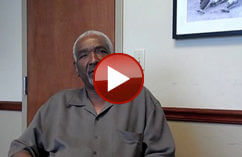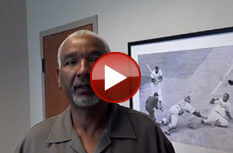Articles
Legal Articles
 ABA Survey
ABA Survey
Judges say people who file suit without a lawyer get worse results. In an American Bar Association survey, most judges were of the opinion that people who bring lawsuits on their own behalf are more likely to lose their case or receive a lower award. Unfortunately, the number of people bringing their own cases has increased in recent years. Additionally, not having a lawyer also makes your case take longer because of the difficulties of navigating the procedures of the justice system.
DePuy Hip Implant Recall
93,000 DePuy ASR hip replacement systems were recalled due to an unreasonably high failure rate Johnson & Johnson, and its DePuy Orthopaedics subsidiary, announced last week that it is recalling parts used for hip replacements. At issue is the high rate of repeat surgeries needed by people who have received the parts. An estimated 93,000 people will be affected by Johnson & Johnson’s latest product recall.
Affected hip replacement parts involved in the recall include the DePuy ASR XL Acetabular System and the DePuy ASR Hip Resurfacing System. Patients who reported problems in the first five years and had revision surgery reported a variety of symptoms, including pain, swelling and problems walking. Other symptoms that may indicate
a serious problem with the hip replacement parts include:
- Loosening – when the implant does not stay attached to the bone in the correct position
- Fracture – where the bone around the implant may have broken
- Dislocation – where the two parts of the implant that move against each other are no longer aligned
- Metal debris – where metal particles from the component parts moving together spread around the hip area.
We would like to review any cases involving individuals who have had a DePuy hip device implanted; and all individuals unsure of the type of hip device implanted if the person has had revision surgery, or the person is experiencing hip pain, hip swelling, or difficulty walking.
For more information, please contact us by telephone at 1-800-898-2034 or email us at:[email protected].
How Our Cars Got Safer
by Gibson Vance
The Washington Post
Traffic deaths in the United States have dropped to their lowest level since 1949, according to a report released this month by the National Highway Traffic Safety Administration (NHTSA). Remarkably, this drop occurred even as Americans drove 21 billion more miles in 2010 than they had the previous year.
The drop in fatalities is due in large part to the fact that cars are getting safer. Since the introduction of the Ford Pinto nearly four decades ago a car synonymous with danger, destruction and executives putting profits ahead of consumer safety amazing advancements have been made in auto safety. The technology is better, regulations are stronger and buyers have more informatio

n. Not surprisingly, consumers are drawn to cars with the latest safety features.
Yet these factors alone do not tell the whole story. History shows that litigation and the civil justice system have served as the most consistent and powerful forces in heightening safety standards, revealing previously concealed defects and regulatory weaknesses and deterring manufacturers from cutting corners on safety for the goal of greater profits.
The Ford Pinto
litigation sent a strong message to the auto industry. Unfortunately, manufacturers have still sold dangerous cars. In June 2004, a Dallas-area mother stopped her Ford F-150 truck to speak with her husband through the drivers side window. Her 3-year-old daughter leaned out the passenger’s side window and accidentally hit the rocker switch, causing the window to close on her neck. When her parents noticed moments later, it was too late their daughter was strangled.
As power windows became more common, so too did instances of children being strangled. Seven children died within a three-month period in 2004. Manufacturers were aware of the issue, and the fix was relatively simple and inexpensive. In response to regulations in other countries, European and Asian cars already used a safer switch one that must be pulled up to raise a window and so did many U.S. manufacturers on cars they offered to foreign markets. Yet incredibly, U.S. manufacturers did not install the safer switches on domestic cars because NHTSA had no rules governing power-window safety. Litigation eventually forced universal acceptance of the safer switches in 2006.
It is easy to take for granted just how much safer vehicles have become and how safety measures have been standardized. For years, the auto industry has worked to undermine regulations and limit its liability by pushing for complete immunity from lawsuits when their vehicles comply with minimum federal safety standards. This would, in short, be devastating for consumers.
Recall that the Pintos design met all government standards of the time. Had compliance with federal standards been a complete defense of vehicle safety, Ford could not have been held accountable for the many burn victims that the company was later shown to have anticipated.
Put another way, without the civil justice system, gas tanks would still explode in rear-end collisions, seat belts and airbags would not be standard, and cars would roll over onto roofs that would be easily crushed.
There are multiple reasons behind the welcome news that traffic deaths continue to decline. But the role of the civil justice system is often overlooked. Litigation has spurred safety innovations in vehicles for more than half a century and will continue to be essential in keeping Americans safe and holding manufacturers accountable.
The writer is president of the American Association for Justice.















